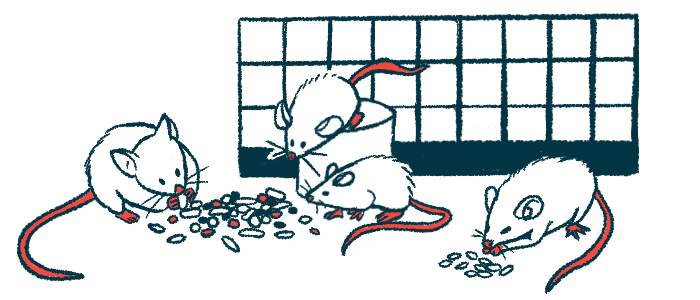ATH-1105 Aids Nerve Health and Motor Skills in Mice, Trial Possible
Clinical testing sought for molecule that targets pathway supporting nerve cells

Use of ATH-1105, a small molecule being developed by Athira Pharma to treat amyotrophic lateral sclerosis (ALS), protected against nerve damage and improved motor function in a mouse model of the disease, according to data shared in a recent company presentation.
Athira is planning to file an investigational new drug application with the U.S. Food and Drug Administration (FDA), essentially a request for permission to begin clinical testing of ATH-1105 in people.
“Our dedication to advancing new therapeutics to impact neurodegenerative diseases remains steadfast,” Mark Litton, PhD, the company’s president and CEO, said in a press release.
Small molecule aiming to treat ALS by maintaining nerve cell health
ATH-1105 is designed to activate the HGF/MET system, a molecular signaling pathway that plays numerous roles in maintaining the health of nerve cells. Research over the past two decades has shown that increasing the activity of the HGF-MET pathway can reduce disease severity in laboratory models of ALS.
In the December presentation, motor neurons — the specialized nerve cells controlling movement that die in ALS — in lab dishes treated with ATH-1105 were reported to show significantly better survival under toxic conditions.
The experimental therapy also was tested in a mouse model of ALS caused by mutations in the TARDBP gene that provides instructions for making the TDP-43 protein. Mutations in this gene account for about 4% of familial ALS cases and 1% of sporadic cases. Yet, atypical clumps of the TDP-43 protein are found in almost all cases of ALS, and thought to help drive the disease.
Compared with untreated mice in the model, those given ATH-1105 maintained significantly higher body weight, indicating generally better health. Treated mice also had significantly lower levels of inflammatory markers, namely TNF-alpha and IL-6, and lower levels of neurofilament light chain (NfL), a marker of nerve damage, researchers reported.
Analyses of the mice’s nerve cells showed that those treated with ATH-1105 had less degeneration and better electrical activity. These mice also performed better on tests of motor function, although their performance was significantly poorer than that of healthy animals.
“These results highlight the therapeutic potential of ATH-1105 in ALS and support further development,” the researchers concluded.
Athira is currently developing several other experimental therapies targeting the HGF/MET pathway, including one called fosgonimeton that is currently in a clinical trial in Alzheimer’s patients and a separate trial that includes people with Parkinson’s disease dementia.
“The consistency of data from preclinical models across various neurodegenerative diseases and in Alzheimer’s patients suggest that our small molecule product candidates may be neuroprotective, neurotrophic, procognitive and potentially disease-modifying,” Litton said.
“We expect to complete enrollment of the LIFT-AD study [testing fosgonimeton in] mild-to-moderate Alzheimer’s disease … [and] to filing an IND application for ATH-1105 as a potential treatment for ALS,” Litton added. “We also plan to publish and present additional data that further support that HGF/MET enhancement may play an important role in treating neurodegenerative disease.”







